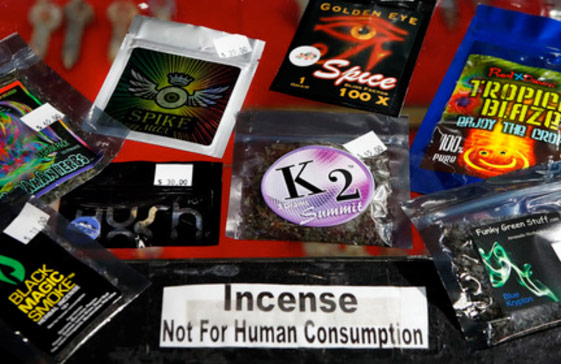- Question: How do the ingredients in e-cigarettes and vaporizers affect respiratory health? - August 16, 2019
- Bad Technique and Vocal Injury - January 9, 2019
- Is Edible Marijuana Dangerous for the Voice? Myths Dispelled - December 18, 2018
- Surprise! You have a hemorrhage - January 31, 2018
- Graves’ Disease: Treatment Overview - September 25, 2017
- Adele and the Stigma of Vocal Injury - July 11, 2017
- Vocal Curbside Consult: How does the thyroid affect the voice? - May 16, 2017
- Vocal Curbside Consult: How do hormones affect the voice? - May 3, 2017
- Vocal Curbside Consult: How do emotion and stress affect the voice? - April 17, 2017
- Vocal Curbside Consult: Vocal Recovery After Illness - April 7, 2017

There is growing concern about the health risks associated with synthetic marijuana, sold as “spice” or “herbal incense.” Sold without restrictions in gas stations and smoke shops, fake pot is an artificial form of marijuana, and works on the brain in the same way as marijuana. However, due to the way it is manufactured and consumed, the dangers are real, and probably significantly greater than marijuana itself.
Several deaths have been associated with the use of synthetic marijuana since 2010. However, teenagers still continue to use the drug, likely due to its legal status, undetectability by drug testing, low cost, and easy accessibility. There is likely also the perception that it is safer because it is legally available. It is critical to be informed about the life-threatening risks of synthetic marijuana.
What is synthetic marijuana (fake pot)?
Synthetic marijuana was created in labs to imitate the effects of THC, the active substance in natural marijuana. The material is made and then sprayed onto dried plant leaves to give the synthetic marijuana a similar appearance to natural marijuana.
Synthetic marijuana is packaged and sold in the United States as herbal incense, and provides a seemingly innocent way for kids and teens to purchase the drug.

Why is using fake marijuana risky?
The largest risk of synthetic marijuana is controlling the dose that is taken. The method used to make the drug is not precise, where the liquid drug is sprayed unevenly across dried leaves. Some leaves get a very high dose and some get a very low dose. If a joint is made that contains too much of the high-dose leaves (which look identical to the low dose ones), too much drug will be consumed. There is no regulation of the manufacturing process. Once packaged, it is impossible for the user to determine the drug dosage, leading to a high probability of overdose and serious injury.
What are the health risks associated with synthetic marijuana use?
Synthetic marijuana usage may result in serious health risks including:
- Psychosis, hallucination or severe agitation
- Tremors
- Convulsions or Seizures
- Dangerous increases in blood pressure
- Nausea/Vomiting
- Laryngitis
As a singer, I had thought synthetic marijuana would be less dangerous for my voice than regular marijuana. Is this true?
Synthetic marijuana, like any inhaled substance, causes irritation of the vocal folds and swelling, known as laryngitis. Laryngitis results in hoarseness and make the vocal folds more susceptible to injury and vocal damage. Vocal nodules, polyps, and hemorrhage can occur when a voice user with laryngitis continues to stress their voice. There is no significant difference in laryngitis due to natural marijuana inhalation as compared to synthetic marijuana.
Is synthetic marijuana worse than traditional/natural marijuana?
Synthetic marijuana is considerably more dangerous than naturally marijuana. The effects of synthetic marijuana are, in short, unpredictable, and potentially deadly.
To learn more about Dr. Reena Gupta or synthetic marijuana substitutes, visit: www.voicedoctorla.com.
Photo credit: “Marijuana” by United States Fish and Wildlife Service – [1], specifically CASA1_LF.jpg. (If the links expire, the photo can be found by searching for “cannabis” at the GIMP photo archive.) The original file with a watermark is at http://www.fws.gov/midwest/



